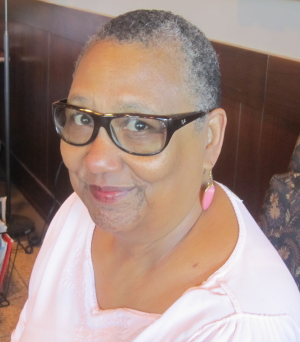While many women have probably been informed about the importance of Vitamin D for bone health, there’s still a lot of research emerging. Richmond’s own, Ann Creighton-Zollar, a health and nutrition educator, has made it her goal to educate the community on the importance of Vitamin D, especially as it relates to mothers and newborns.

As a health and nutrition educator, one of Ann Creighton-Zollar’s biggest goals is to help mothers breastfeed and supply their babies with Vitamin D.
Inspired by her own experience with an extreme Vitamin D deficiency, Ann researched and
wrote a thesis on the matter and received her master’s in Health and Nutrition Education this past June. She’s recently written an article, Give Your Baby the Vitamin D Advantage, with our Nurture audience in mind, so we sat
down to talk about the subject with her in more detail.
What has surprised you most in your research on Vitamin D?
It has been difficult trying to get people to understand that Vitamin D is not a vitamin. Early scientists made a mistake. They did not have the laboratory equipment then to figure out what they have identified was not a vitamin. It wasn’t until the 1970s that labs were able to figure out that once in the body, Vitamin D becomes a secosteroid hormone, a type of steroid hormone like estrogen and progesterone.
Based on your findings, what would you tell a new mother to do to ensure she and her children are receiving sufficient amounts of Vitamin D?
First, to do some reading and then discuss it with her physician. The American Academy of Pediatrics says that newborn babies should have 400 IU of vitamins per day starting shortly after birth. I wouldn’t hesitate. I wouldn’t fuss around. I’d make sure my infant was getting it a few days after birth.
That AAP recommendation has been known for almost a century, since rickets started being treated with Vitamin D in the 1930s; that’s how they decided how much would go into fortified milk and formula. What happens is we forgot. The AAP dropped that recommendation and brought it back up; they’re back at where it first started.
Can your baby get the Vitamin D it needs through breast milk?
Not necessarily. If you’re breastfeeding, measuring your level doesn’t tell you how much of it is getting into your baby. Even if your results say you’re sufficient, it doesn’t mean you have enough Vitamin D getting to the baby.
And recent research suggests that the 400 IU in the prenatal vitamins is not putting enough into the breast milk. That’s why following the APP recommendation is so important.
Read Ann’s blog post on Vitamin D and breast milk.
Do you have any tips on administering Vitamin D to your infant?
It’s very important that the mother reads the label and gets help understanding the dosage if she’s unsure. The recommendation is often for oral supplemental, but there are other forms of administrating Vitamin D. You can give it transdermally – just put a little olive oil on the skin and drop the liquid Vitamin D on and rub it in – it gets to the
body just fine.
I usually recommend Carlson Labs as it has high quality Vitamin D supplements at a very reasonable price.
What’s the most important thing you want childbearing families to know about Vitamin D?
If you have private insurance, ask your doctor to test your Vitamin D levels. The Endocrine Society says that everyone should be screened and then if they are high risk, they should be tested. And the Society for Epidemiologic Research suggests that all pregnant women are at high risk.
If you were Vitamin D insufficient when you were pregnant, the baby can still be born with a sufficient skeletal system, taking what it needs while in the womb, but after being born, the baby needs Vitamin D to help develop a strong skeletal system.
Also, that Vitamin D was not designed for us
to get it through our food but through the sun. Everything on the planet needs Vitamin D. Think about it this way, when you get pet reptiles, you make sure it has a solar lamp, right? Pet reptiles need a solar lamp or their spines will
collapse, but we take humans, who have the same needs, out of the sun and slather on sunscreen when we’re out in it. So we’re not getting the Vitamin D we need from the only natural source.
Can you tell signs of deficiency?
Not until you are severely deficient. Symptoms don’t start to be visible until it’s too late. The deficiency takes the calcium out of your bones, and you have bone pain. At that level, you’re sick.
It’s like how you don’t feel cancer when it first starts or
how you don’t feel the cardiovascular system break down. You can’t fix it either. Even if they start getting the necessary amounts of Vitamin D in early childhood, you can still have a child who is Vitamin D insufficient in the early parts of life that could still lead to health problems later on.
Besides your website and blog, what are some other good resources on the topic?
There’s a great deal of additional research that needs to be done. Some good sites to check out and follow are the Vitamin D Council and Grass Roots Health.
Can local parents and families contact you to discuss Vitamin D with you in more detail?
Yes! Go to my website at www.anncreighton-zollar.net. I will also be doing a radio show with Ana
Edwards on 97.3 WRIR on August 26 at noon and a Webinar on December 17 through Hawthorne University.
Ann is not a physician. The information she provided in this interview is provided for general information only. Please consult with your doctor before deciding to take, or administer, any nutritional supplement to your or your child. Learn more and connect with Ann at her website, www.anncreighton-zollar.net, her blog and on Facebook.

